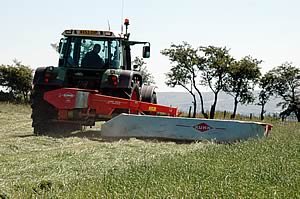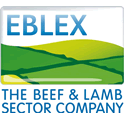2010-03-02
There is much beef and sheep businesses of every description can do to cut both their fixed costs and greenhouse gas emissions for very little effort or expense by taking a better informed and more active approach to farm energy management, suggests EBLEX – the industry body for beef and lamb levy payers.
By employing a series of simple energy saving measures recommended in a specialist Whole Farm Energy Use report prepared for the Agriculture and Horticulture Research Forum (AHRF), it believes most businesses could make substantial inroads into one of their biggest areas of fixed cost expenditure.
While beef and sheep production are by no means high energy using sectors of the farming industry, the most recent Business Pointers costings clearly show power and machinery repairs to be the largest area of fixed costs, alongside labour, on almost every enterprise type. Indeed, it typically accounts for 20% to 25% of the fixed cost burden.
Under these circumstances, anything producers can do to save on fuel, gas and electricity use per unit of output is likely to make a particularly valuable contribution to improving profitability; especially so with escalating energy prices.
Stressing that understanding the current level and pattern of energy consumption must be the first step in any energy efficiency improvement programme, EBLEX identifies transport, lighting, and heating and ventilation as key areas for beef and sheep producer attention. It provides a number of tips from its AHRF work which may not be highly significant individually but can add up to worthwhile cost savings when combined. These include:
- Ensuring all vehicle tyres are kept at the correct pressure to save diesel;
- Shutting off diesel engines when not in use rather than leaving them idling;
- Running tractors in the highest gear and at the lowest throttle level for the job;
- Planning travel to combine jobs and minimise vehicle movements wherever possible;
- Using only low energy light bulbs, especially so in flood-lighting;
- Keeping all lighting covers and fittings clean and well maintained;
- Switching off all lights and other electrical equipment when not is use;
- Installing time switches and daylight or occupancy sensors in key lighting circuits;
- Insulating and draught-proofing farm offices as well as possible to minimise heat losses;
- Utilising standby features on computer equipment and always switching off out of hours;
- Improving building airflow to maximise natural ventilation and minimise draughts;
- Servicing and maintaining ventilation equipment regularly.
Regular monitoring of energy invoices over the year is recommended to maintain a good picture of performance, although producers are advised to take their own meter readings rather than just relying on utility bills as these can be based on irregular or estimated meter readings.
 Climate Change in a Climate of Change Climate Change in a Climate of Change
 Sheep Meat Exports Pass the £300 Million Mark Sheep Meat Exports Pass the £300 Million Mark
 Favourable Market Outlook for English Lamb Favourable Market Outlook for English Lamb
|



